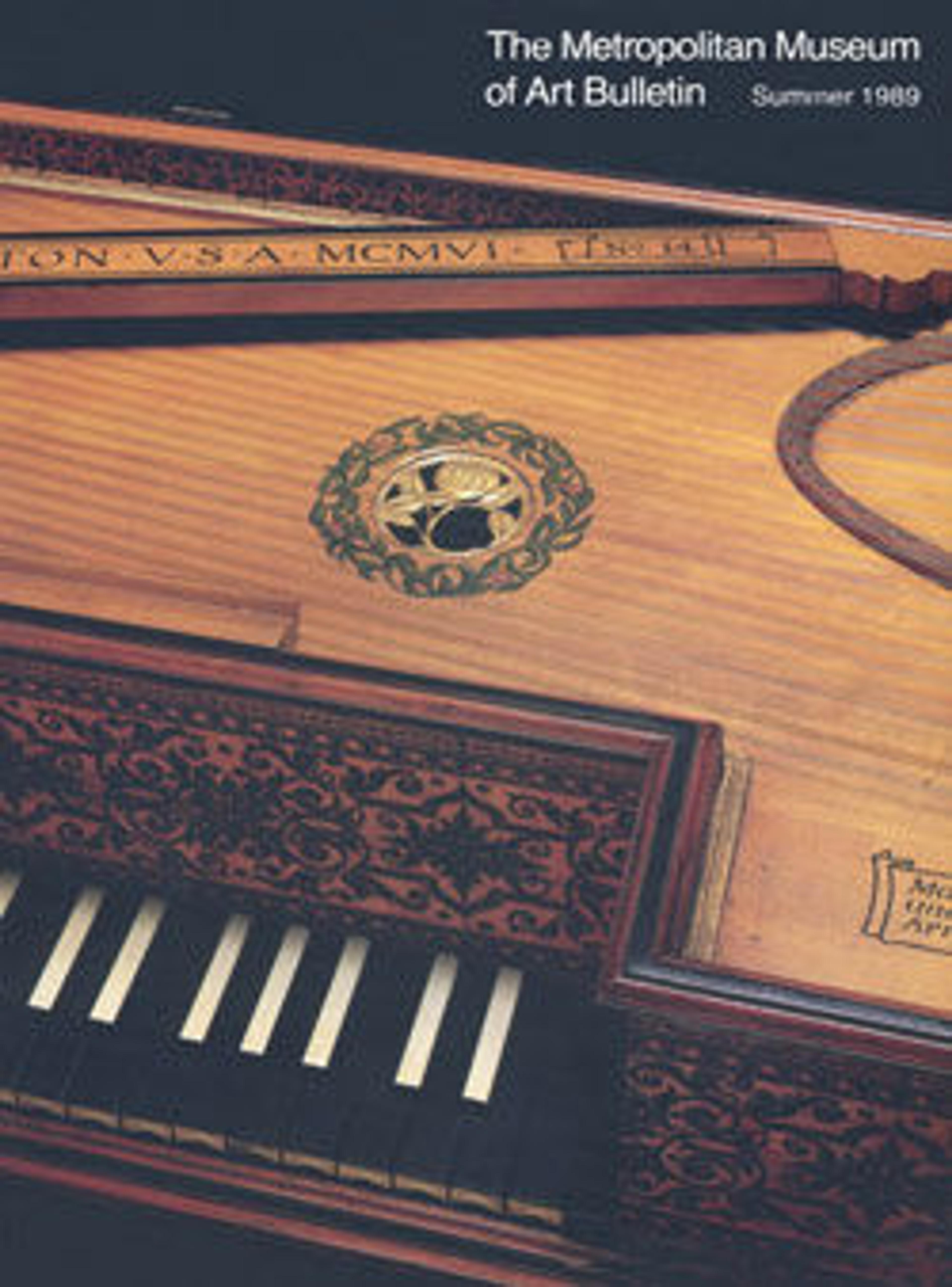Rocking Melodeon
The "rocking" melodeon or organ received this moniker because it had to be pumped up and down (the keyboard therefore rocking) in order to pump the bellows to sound the reeds. The instrument is normally set on a table to play. Instead of keys, this insturment has two rows of buttons that are laid out in an arrangement like a traditional keyboard with a row of naturals, and offset accidentals in alternating groups of two's and three's.
Technical description: Rectangular rosewood veneer case over a diagonally divided double bellows; bellows leather with cloth covering; bellows equipped with two springs (upper one broken) so that pressure on left side sets up rocking motion in bellows; top of instrument has two lengthwise removable maple panels, each with four rosewood-bushed soundholes (some bushings missing), with sliding paper shutters below soundholes for piano and forte effects, operated by horn knob at left of top; rosewood strip between maple panels containing tw rows of ivory button touches, 24 naturals in bottom row and 17 accidentals in top row, the buttons for accidentals having black circles on tops; compass F-a2; brass free reeds beneath removable panels, the touches opening small pallets beneath the reeds to sound them; reeds are blown, not sounded by suction.
Technical description: Rectangular rosewood veneer case over a diagonally divided double bellows; bellows leather with cloth covering; bellows equipped with two springs (upper one broken) so that pressure on left side sets up rocking motion in bellows; top of instrument has two lengthwise removable maple panels, each with four rosewood-bushed soundholes (some bushings missing), with sliding paper shutters below soundholes for piano and forte effects, operated by horn knob at left of top; rosewood strip between maple panels containing tw rows of ivory button touches, 24 naturals in bottom row and 17 accidentals in top row, the buttons for accidentals having black circles on tops; compass F-a2; brass free reeds beneath removable panels, the touches opening small pallets beneath the reeds to sound them; reeds are blown, not sounded by suction.
Artwork Details
- Title: Rocking Melodeon
- Maker: Abraham Prescott (American, Deerfield, New Hampshire 1789–1858 Concord, New Hampshire)
- Date: 1825
- Geography: Concord, New Hampshire, United States
- Culture: American
- Medium: Wood, various materials
- Dimensions: Length: 48.0 cm
Width: 26.0 cm
Depth (closed): 12.5 cm - Classification: Aerophone-Free Reed-harmonium
- Credit Line: The Crosby Brown Collection of Musical Instruments, 1889
- Object Number: 89.4.1194
- Curatorial Department: Musical Instruments
More Artwork
Research Resources
The Met provides unparalleled resources for research and welcomes an international community of students and scholars. The Met's Open Access API is where creators and researchers can connect to the The Met collection. Open Access data and public domain images are available for unrestricted commercial and noncommercial use without permission or fee.
To request images under copyright and other restrictions, please use this Image Request form.
Feedback
We continue to research and examine historical and cultural context for objects in The Met collection. If you have comments or questions about this object record, please contact us using the form below. The Museum looks forward to receiving your comments.
